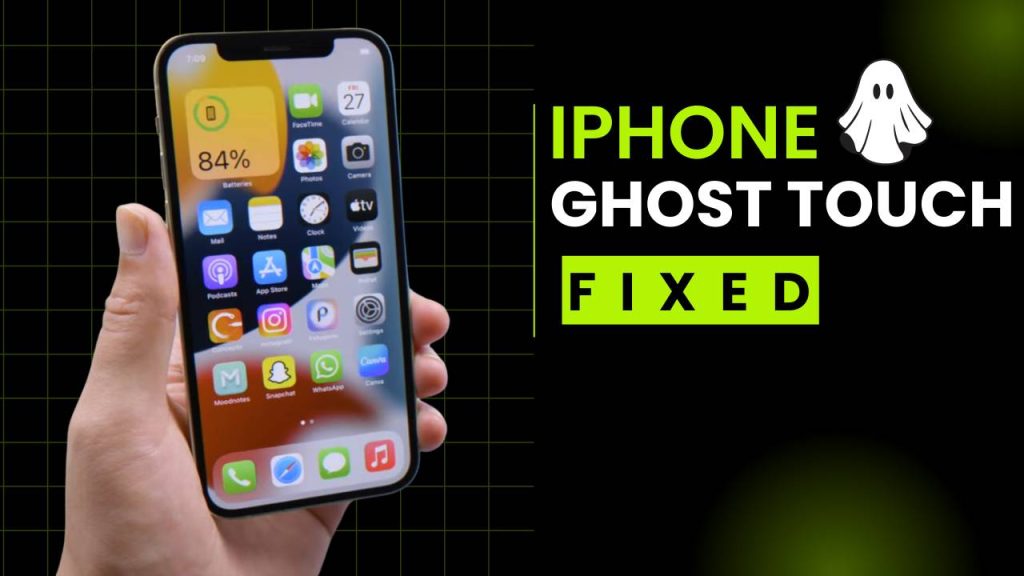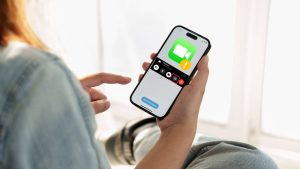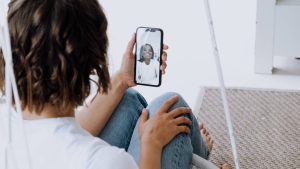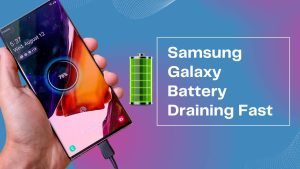Experiencing a ghost touch iPhone can be incredibly frustrating. Screen may start acting on its own—tapping, scrolling, switching apps, or even typing random letters without any user interaction. This glitch is more common than many realize and can severely disrupt daily tasks, productivity, and accessibility.
While it might seem like a hardware failure requiring a costly screen replacement, that’s not always the case. Having dealt with this issue across multiple iPhone models, There are several reliable and practical methods to resolve the ghost touch problem without replacing the screen.
- How to Fix Ghost Touch on iPhone: 7 Easy Solutions That Work
- What Does SOS Mean on iPhone or Phone?
- How to Shut Down Phone : iphone, Samsung Galaxy, Google Pixel
Here are, through step-by-step fixes, including simple software adjustments and DIY solutions, to help you restore normal screen behavior and regain full control of your iPhone.
How to Fix Ghost Touch iPhone Without Screen Replacement
Ghost touch issue can stem from various causes, including software glitches, dirty or faulty charging cables, or even certain accessibility settings that interfere with touch sensitivity. Before spending money on repairs or screen replacements, try these proven solutions:
Ghost Touch iPhone Fix – Works on iOS 17 and iOS 18
1. Force Restart Your iPhone 14/15 (or newer)
Force restart method is effective for resolving temporary software bugs that might cause ghost touch issues. Since the iPhone 14 and iPhone 15 series have different methods for force restarting, here’s how to do it on these models:
How to Force Restart iPhone 14 and iPhone 15 (or newer models):
- Quickly press and release the Volume Up button.
- Quickly press and release the Volume Down button.
- Press and hold the Side button (on the right side) until the Apple logo appears, then release the button.
The force restart process doesn’t erase any data on your device, so it’s a safe first step in troubleshooting. When you force restart your iPhone, it forces the system to stop all background processes and reset any glitches in the software. If ghost touch behavior is due to a temporary bug, this will likely fix the problem.
Why it Works:
A force restart helps clear any minor software hiccups that could be causing unintentional touches or erratic touchscreen behavior. Software glitches, often tied to recent updates or apps running in the background, may cause ghost touch problems. Restarting the phone can solve these issues without data loss.
2. Update iOS to the Latest Version
As the iPhone 14 and iPhone 15 run on the latest iOS versions, Apple frequently releases updates to fix known bugs and improve system performance. If you’re experiencing ghost touch on these newer iPhones, it could be due to a bug that was fixed in a recent update. Regularly updating your device is a good habit to prevent or resolve such issues.
How to Update iOS:
- Open Settings on your iPhone.
- Go to General.
- Tap on Software Update.
- If an update is available, follow the on-screen instructions to Download and Install the latest iOS version.
Pro Tip: Make sure you have a stable Wi-Fi connection and at least 50% battery before updating. Plug your phone in if possible to avoid interruptions during the update process.
Why it Works:
Apple regularly issues updates that address system-level issues, including touchscreen bugs. Sometimes, ghost touch is caused by a bug that the update resolves. After updating your iPhone’s software, check if the issue persists.
3. Disconnect Faulty Accessories
Low-quality or incompatible accessories, especially charging cables and third-party chargers, are a common cause of ghost touch on newer iPhones. These accessories can introduce electrical interference, which may affect the touchscreen’s responsiveness.
Steps to Disconnect Faulty Accessories:
- Unplug any accessories such as chargers, headphones, or third-party USB cables connected to your iPhone.
- If you use a wireless charger, make sure it’s Qi-certified and working properly.
- Test the screen after disconnecting these accessories. If the ghost touch stops, the issue is likely being caused by one of the connected accessories.
Why it Works:
Certain accessories, especially non-MFi (Made for iPhone) certified cables or low-quality accessories, can cause signal interference that affects the touchscreen’s ability to correctly register touch inputs. Disconnecting these accessories eliminates any electrical interference and can help restore normal touch functionality.
4. Remove Case or Screen Protector
A misaligned case or screen protector can sometimes press on the edges of the screen or cause pressure on the touchscreen, which can result in ghost touches. This is particularly relevant for newer iPhones, as the iPhone 14 and iPhone 15 have edge-to-edge displays that are more sensitive to physical pressure.
What to Do:
- Remove your iPhone’s case and screen protector to see if the ghost touch behavior continues.
- Check the screen protector for bubbles or damage. A poorly applied screen protector can disrupt touch sensitivity, especially near the edges.
- Clean the screen carefully using a microfiber cloth to remove any dust or smudges.
Why it Works:
Sometimes, if the case or screen protector is not applied perfectly, it can create uneven pressure on the screen, which can lead to unintentional touches. Removing these accessories temporarily allows your iPhone to respond more accurately to touch, and you can identify if they are causing the problem.
5. Turn Off Touch Accommodations
Newer iPhones have accessibility settings like Touch Accommodations, which are designed to make the phone easier to use for people with motor impairments. If these settings are enabled by mistake, they can interfere with normal touch behavior, including causing ghost touch.
How to Turn Off Touch Accommodations:
- Go to Settings.
- Tap on Accessibility.
- Under the Touch section, tap Touch Accommodations.
- Toggle off Touch Accommodations.
Why it Works:
If Touch Accommodations is turned on, your iPhone might interpret regular touches as accidental ones. Disabling this feature ensures that the touchscreen operates normally without any interference from these settings.
6. Reset All Settings
If the ghost touch issue persists even after trying all of the above methods, you may need to reset all settings on your iPhone. This will restore all system settings (like network preferences and display settings) to their default values without erasing your data. It’s particularly useful for fixing software-related issues that can’t be solved by the previous steps.
How to Reset All Settings:
- Open Settings.
- Tap General.
- Scroll down and tap on Reset.
- Select Reset All Settings.
- Enter your passcode if prompted, and confirm your choice.
Why it Works:
Resetting all settings can help resolve underlying software conflicts that might be affecting your iPhone’s touchscreen. Since this action doesn’t delete any personal data (photos, messages, etc.), it’s a safe method to rule out persistent software issues.
When to Seek Professional Help
If none of the above solutions resolve the ghost touch problem, it could be a hardware issue with the screen or other internal components. In this case, you should contact Apple Support or visit an Apple Store or authorized service provider. Common hardware causes of ghost touch include:
- Damaged digitizer: The digitizer is the layer that detects touch. If it is damaged, the screen might register phantom touches.
- Display or connection issue: A loose or faulty display connection could cause the touchscreen to malfunction.
If hardware repairs are required, Apple’s warranty or AppleCare+ (if you have it) may cover the cost of repairs.
By following these steps, you can resolve most ghost touch issues on the iPhone 14, iPhone 15, or other latest iPhone models. If the problem persists despite trying all software fixes, seeking professional help is your best bet.
Top Solutions for Ghost Touch iPhone Issues
When the basic fixes don’t solve the problem, you can take further steps before considering hardware replacement.
1. Reset All Settings
Sometimes your settings may be corrupted. Head to Settings > General > Transfer or Reset iPhone > Reset > Reset All Settings. This won’t delete your personal data, but it will reset system configurations like Wi-Fi, Bluetooth, and keyboard settings.
2. Enable Touch Accommodations
Apple has a hidden feature under Settings > Accessibility > Touch > Touch Accommodations that lets you customize how the screen responds to touch. Turn it on and play around with settings like Hold Duration and Ignore Repeat to reduce false touches.
3. Perform a Factory Reset (as a last resort)
If nothing else works, back up your data and do a full reset by going to Settings > General > Transfer or Reset iPhone > Erase All Content and Settings. This can eliminate persistent software issues that might be causing ghost touch.
Preventing Ghost Touch on iPhone: Essential Tips and Tricks
While fixing ghost touch on your iPhone may resolve the immediate issue, it’s equally important to adopt proactive measures to prevent the problem from recurring. A few simple yet effective habits and maintenance tips can significantly reduce the likelihood of experiencing ghost touch in the future.
Here’s a detailed guide on how to keep your iPhone’s touchscreen functioning smoothly and without interruption:
1. Keep Your iPhone Screen Clean
A clean screen is essential for maintaining accurate touch sensitivity on your iPhone. Dirt, dust, and even oils from your fingers can create a layer of residue on the screen that may interfere with the touchscreen’s ability to detect your finger’s touch. These contaminants can cause false touches, which lead to ghost touch.
How to Maintain a Clean Screen:
- Use a microfiber cloth: This type of cloth is designed to remove dust, fingerprints, and oils without scratching the screen. Gently wipe the screen with a microfiber cloth to ensure it’s free from any debris.
- Clean the edges and corners: Often, dirt accumulates around the edges of the screen or near the speakers, where it’s harder to see. Make sure to clean these areas regularly to avoid interference with the touchscreen.
- Avoid harsh cleaning chemicals: While it’s tempting to use household cleaners, these can damage the screen’s oleophobic coating (the layer that resists fingerprints). Stick to a dry microfiber cloth or, for more stubborn marks, lightly dampen it with water or a screen-safe cleaning solution.
2. Avoid Using Wet Hands
One of the most common but overlooked causes of ghost touch is moisture. If your hands are wet or even slightly damp, it can cause conductivity issues, leading to erratic touchscreen behavior. Moisture can cause electrical interference between your finger and the touchscreen, resulting in phantom touches or unresponsive areas on the screen.
Why Moisture Affects the Touchscreen:
The iPhone’s capacitive touchscreen works by detecting electrical conductivity from your skin. When you touch the screen with wet hands, the extra moisture can distort the signal and confuse the device, causing it to register unintended touches. Even a small amount of moisture can create significant issues with touch accuracy.
Tips to Avoid Moisture Issues:
- Dry your hands thoroughly before using your iPhone, especially in humid environments or after washing your hands.
- Avoid using the iPhone in wet conditions like during rain or while washing dishes. If the phone gets wet, dry it off immediately using a microfiber cloth.
3. Charge Your iPhone with Certified Accessories
Charging your iPhone with non-certified or cheap third-party accessories can negatively impact the touchscreen’s performance. This includes charging cables, power adapters, and wireless charging pads that are not MFi (Made for iPhone) certified. These accessories may not provide a stable power supply, which can interfere with your device’s internal components, including the touchscreen.
How Charging Accessories Affect Touch Sensitivity:
When using unlicensed charging accessories, the iPhone may experience power fluctuations that affect its internal circuitry. This can lead to issues like ghost touch, where the screen behaves erratically, interpreting inputs that are not actually happening. Additionally, some low-quality cables may cause electromagnetic interference, which can also disrupt the normal functioning of the touchscreen.
What You Can Do:
- Use certified accessories: Always ensure that the charging cables, adapters, and wireless chargers you use are MFi certified. MFi certification ensures that the accessories meet Apple’s strict quality standards and won’t interfere with your phone’s performance.
- Avoid charging while using: If you’re actively using your phone during charging, avoid using third-party accessories, as this increases the chances of interference. Try to limit the use of your device while it’s plugged in to reduce potential disruptions.
4. Avoid Extreme Temperatures
The iPhone’s touchscreen is designed to operate optimally within a certain temperature range. Exposure to extreme temperatures—whether hot or cold—can have a negative effect on the phone’s performance, including causing ghost touch behavior. Both heat and cold can distort the screen’s sensitivity, leading to phantom touches or failure to register correct input.
How Temperature Affects the Screen:
- High temperatures (such as leaving your phone in a hot car or under direct sunlight for prolonged periods) can cause the screen to become overly sensitive, triggering ghost touches.
- Cold temperatures (especially below freezing) can cause the touchscreen to become less responsive, resulting in delayed or unregistered touches. In extreme cold, the screen may even freeze, making it impossible to interact with the phone.
Tips to Protect Your iPhone from Temperature Extremes:
- Avoid leaving your iPhone in hot environments, such as inside a car or near a heating source, for extended periods.
- Don’t use your phone in extremely cold conditions, as this can reduce the touchscreen’s responsiveness. If you must, try to keep it in an insulated pocket to protect it from the cold.
- Allow your phone to return to a moderate temperature if it has been exposed to extreme heat or cold before using it.
DIY Methods to Resolve Ghost Touch iPhone Glitches
Many users assume screen replacement is the only fix—but that’s often not true. Some DIY methods work exceptionally well:
Freezer Trick (for minor hardware faults): As odd as it sounds, some users have placed their iPhones in the freezer (inside a plastic ziplock) for 5 minutes. This sometimes temporarily resolves minor digitizer issues caused by heat.
Tap Gently on the Screen Edges: Light tapping around the edges of the iPhone screen can sometimes realign internal connectors—especially after a drop.
Use AssistiveTouch as a Workaround: If certain parts of your screen are unusable, enable AssistiveTouch to access all functions without using the physical screen areas.
Why My iPhone Touch Screen Not Working? Common Causes and Fixes
I hope these steps help you reclaim full control of your iPhone without the need for costly repairs. Try the fixes above one by one—and only consider professional help if all else fails.
FAQs
1. What is Ghost Touch on iPhone?
Ghost touch refers to a situation where your iPhone screen registers taps or touches that are not made by you. This can cause erratic behavior, such as opening apps, scrolling, or performing actions without user input.
2. What Causes Ghost Touch on iPhone?
Ghost touch can be caused by various factors, including:
- Software glitches or bugs.
- Faulty or unresponsive touchscreen due to damage.
- Dirty or wet screen affecting touch sensitivity.
- Third-party accessories causing interference with the screen.
- Screen protectors or cases that are not aligned correctly.
- External environmental factors, such as temperature extremes or moisture.
3. How Do I Fix Ghost Touch on My iPhone?
You can try several solutions to fix ghost touch:
- Force restart your iPhone by holding the power and volume down buttons (or Home + Power on older models) until the Apple logo appears.
- Update iOS to the latest version via Settings > General > Software Update.
- Disconnect faulty accessories, such as third-party charging cables or unapproved accessories.
- Remove the case or screen protector temporarily to see if they are causing interference.
4. Can Ghost Touch Be Caused by a Faulty Screen?
Yes, ghost touch can result from a faulty or damaged screen. If the touchscreen itself is malfunctioning due to impact or wear and tear, it may register phantom touches. In this case, you might need a screen replacement.
5. Can Ghost Touch Be Fixed Without Replacing the Screen?
Yes, many times ghost touch issues can be fixed without needing a screen replacement. Software solutions like force restarting the device or updating iOS can help resolve the issue. Additionally, checking for external factors, such as moisture or faulty accessories, can help you avoid screen replacement.
6. How Can I Prevent Ghost Touch on My iPhone?
To prevent ghost touch, make sure to:
- Keep your iPhone clean from dirt, oil, and moisture.
- Use certified accessories when charging or connecting to external devices.
- Avoid using your iPhone in extreme temperatures.
- Avoid using your iPhone with wet hands.
- Remove any misaligned cases or screen protectors that might put pressure on the screen.
7. Can Ghost Touch Be Caused by Moisture or Water Damage?
Yes, moisture or water exposure can lead to ghost touch. Even slight dampness on the screen or hands can cause erratic touchscreen behavior, as the iPhone’s capacitive touchscreen detects conductivity.
8. Is Ghost Touch Common on Newer iPhone Models?
While ghost touch can happen on any iPhone model, it’s generally more common on older devices with worn-out screens or components. Software issues or third-party accessories can still cause ghost touch on newer models as well.
9. What Should I Do if My iPhone Keeps Having Ghost Touch Issues?
If ghost touch continues despite troubleshooting, consider:
- Backing up your iPhone and then performing a factory reset to resolve any software issues.
- Visiting an Apple store or authorized repair center if the issue persists and seems to be related to a hardware malfunction, such as a faulty touchscreen or logic board.
10. Is Ghost Touch Covered Under Warranty?
If ghost touch is caused by a hardware defect, it may be covered under your iPhone’s warranty or AppleCare. If the issue is due to accidental damage (e.g., dropping your iPhone or water damage), it may not be covered. It’s always a good idea to contact Apple Support to check your warranty status and options.






